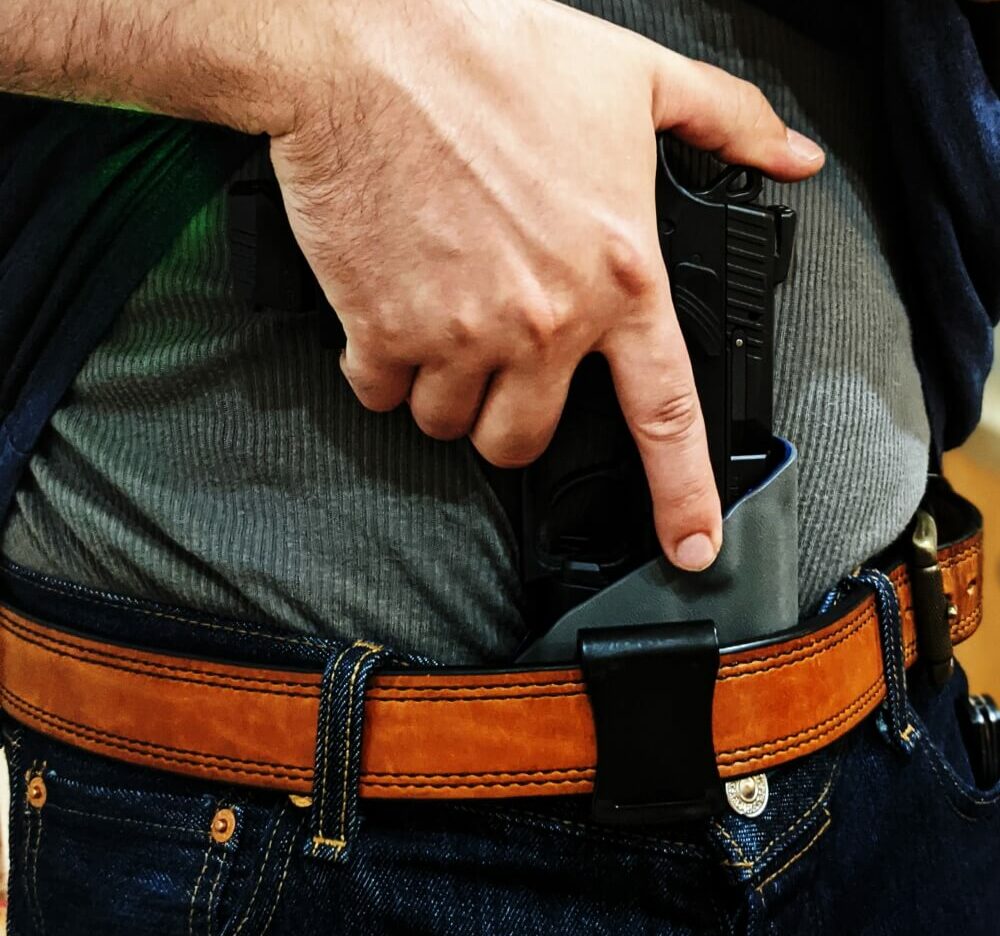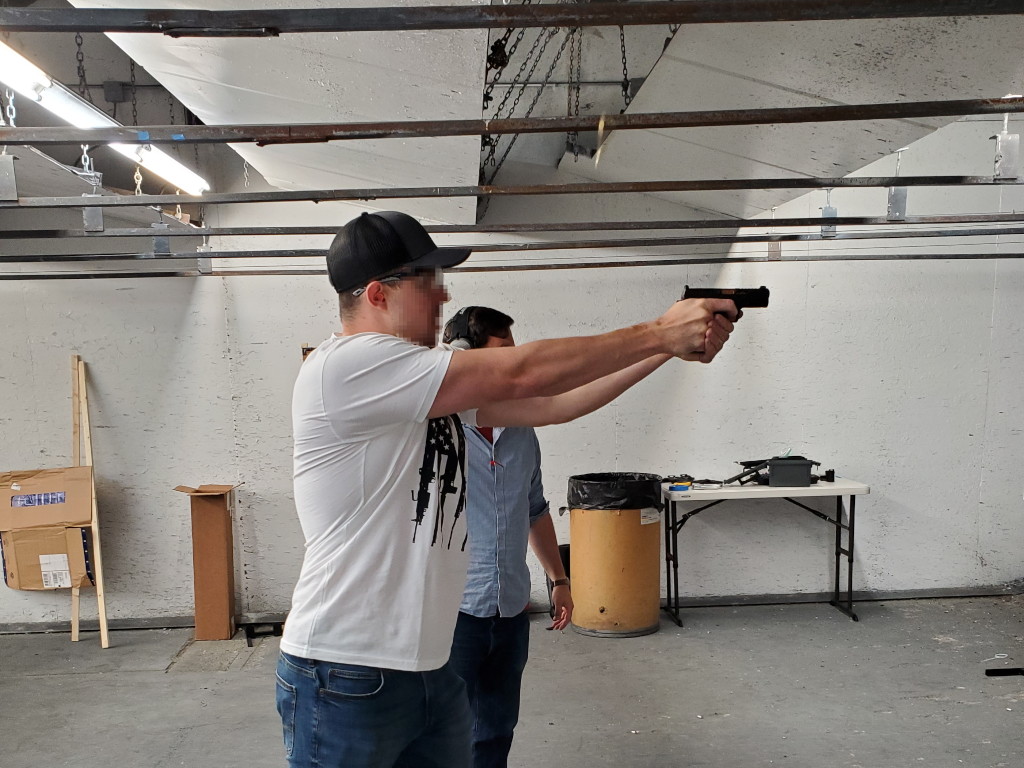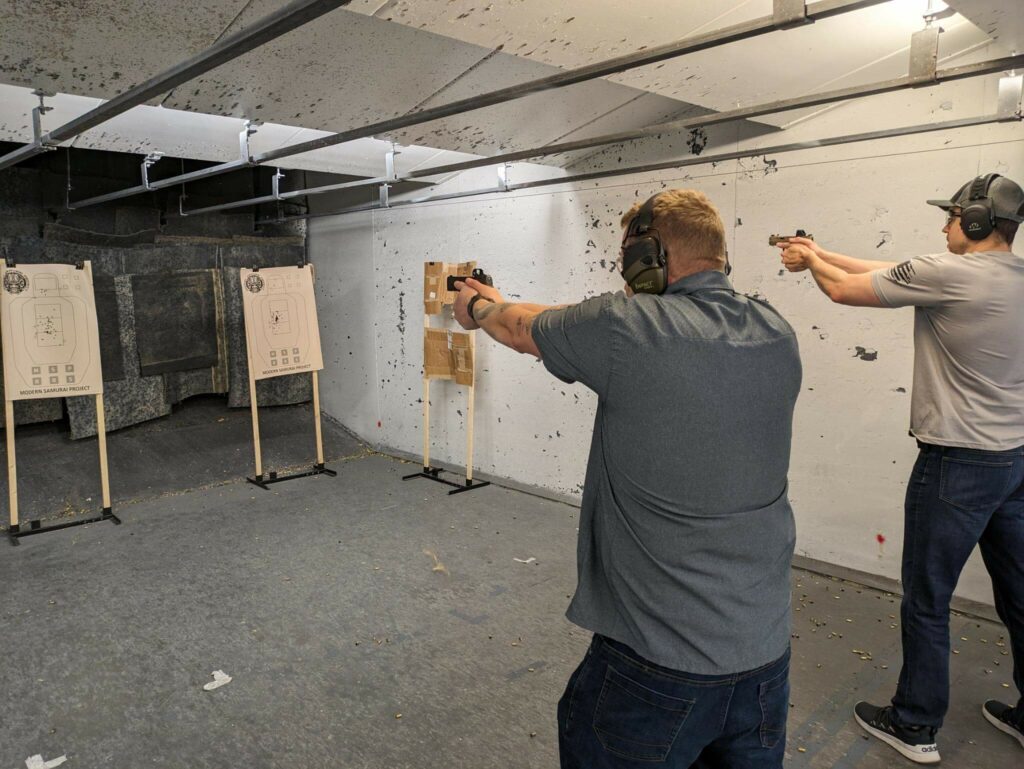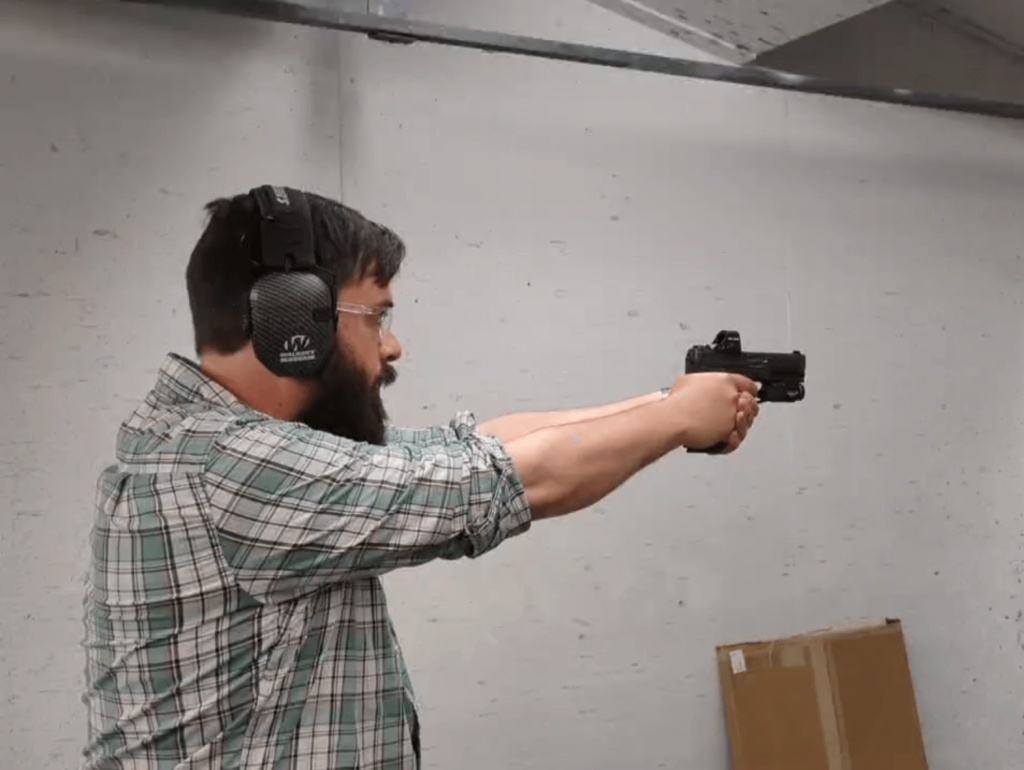Dry Fire to Build Shooting Virtue
Shooting every day is a great way to build your skills and get better at shooting. Unfortunately, most of us lack the opportunity, time, and money to shoot every day. Thankfully, dry firing is a pretty close second that allows you to practice many of the virtues you need to be a good shooter. Dry fire can’t completely replace shooting for training, you still have to live fire for recoil management and accuracy, but just about every other aspect of shooting can be worked on through dry fire.
Use Your Own Gun and Holster to Safely Train
One of the best things about dry fire is that to get started, you already have what you need. You can use the gun you already have and the holster you wear every day for your training. In fact, it’s best to use your own gun to dry fire because it provides you training on your gun using your holster. We’ll look at training aids below but none are necessary to get started.
One thing that’s important to keep in mind is that the four rules of firearms safety still apply when you are dry firing. It’s important to check your firearm every time you pick it up to confirm its status, keep it pointed in a safe direction, keep your finger off the trigger until you are ready to (dry) fire, and know your target and what’s beyond it. If your living situation doesn’t allow you to follow rules 2 & 4, a blue gun, SIRT pistol, or airsoft gun may be a better choice.
Grab Some Snap Caps and Shot Timer
While you don’t need them to protect your gun, snap caps or Rogers Tap Rack Training Aids are great for practice Tap Rack Roll or reload drills. I particularly like the Rogers TRT Aids because they allow me to actuate the slide without chambering or ejecting a snap cap. Both snap caps and TRT Aids are inexpensive and ubiquitous for training.
Dry firing is completely safe for all modern service firearms, outside of some rimfire guns and some 1911 models, so if you carry a modern striker fired, DA/SA, or DAO firearm, you can start dry firing today.
It’s also important to use a shot timer, whether it’s a full live fire timer or an app on your phone. A shot timer introduces a small level of unknown (and stress) with a variable start time. It also allows you to keep track of your time to see what sort of progress you are making and diagnose any potential areas of weakness. While speed is not the only, or even the most important metric, it is a good thing to measure to see if you are getting better. Whether you are using a dedicated timer like a PACT or an app on your phone, the key is setting a baseline and see how you compare to that baseline as you practice.
Use a Dedicated Magazine
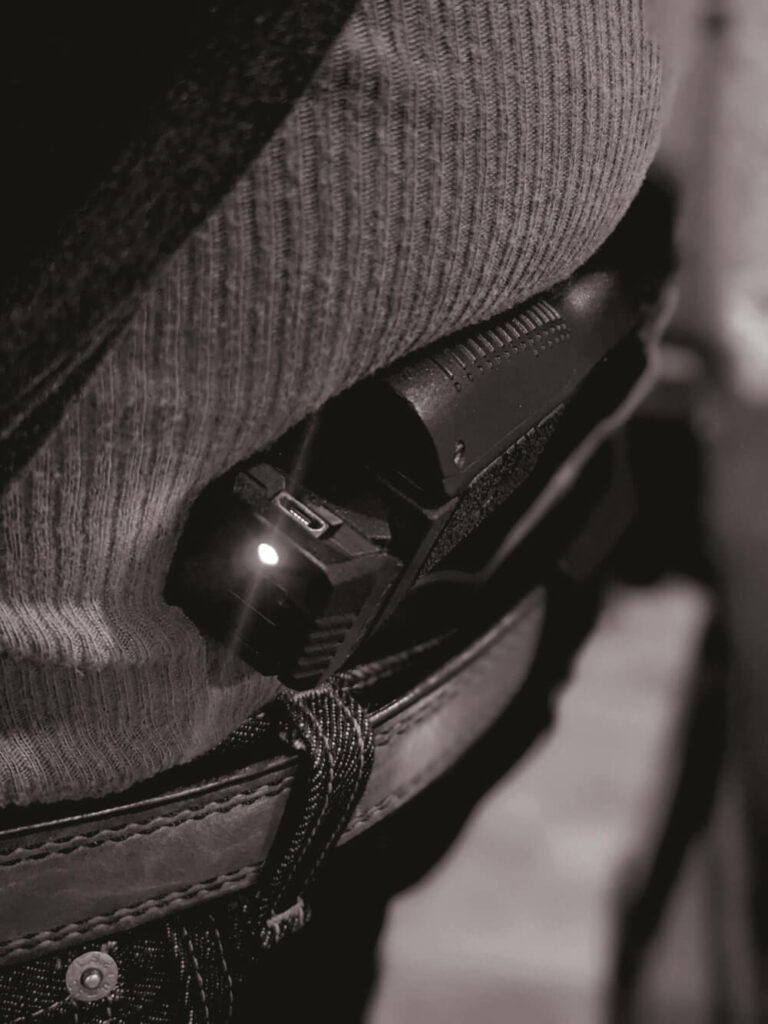
One of the things that helped reduce my barrier for regularly dry firing was to set aside a pair of magazines dedicated to training. With dedicated magazines set aside, you don’t have to either train without a magazine loaded or unload your entire mag every time you want to train. It makes it much easier to clear your weapon, load a training magazine, and start dry firing.
Mark them so you know which they are, and keep them unloaded with either snap caps or TRT inserts to clearly distinguish them from your carry magazines and ensure you don’t mix them up. This also makes them useful for more strenuous range training, where you may be dropping magazines or otherwise abusing them. Shooting with your carry magazines to ensure they properly function is important, but you don’t want to expose them to the sort of abuse that could cause them to fail.
Get External Feedback
Once you’ve started dry firing regularly and have established some good fundamentals, it’s important to confirm you are training good habits and not building dry fire vices by habitually repeating poor firearms handling. One easy way to do this is to train in front of a mirror or record a video of your draw. That sort of external feedback will help you see bad habits you may have that you haven’t noticed.
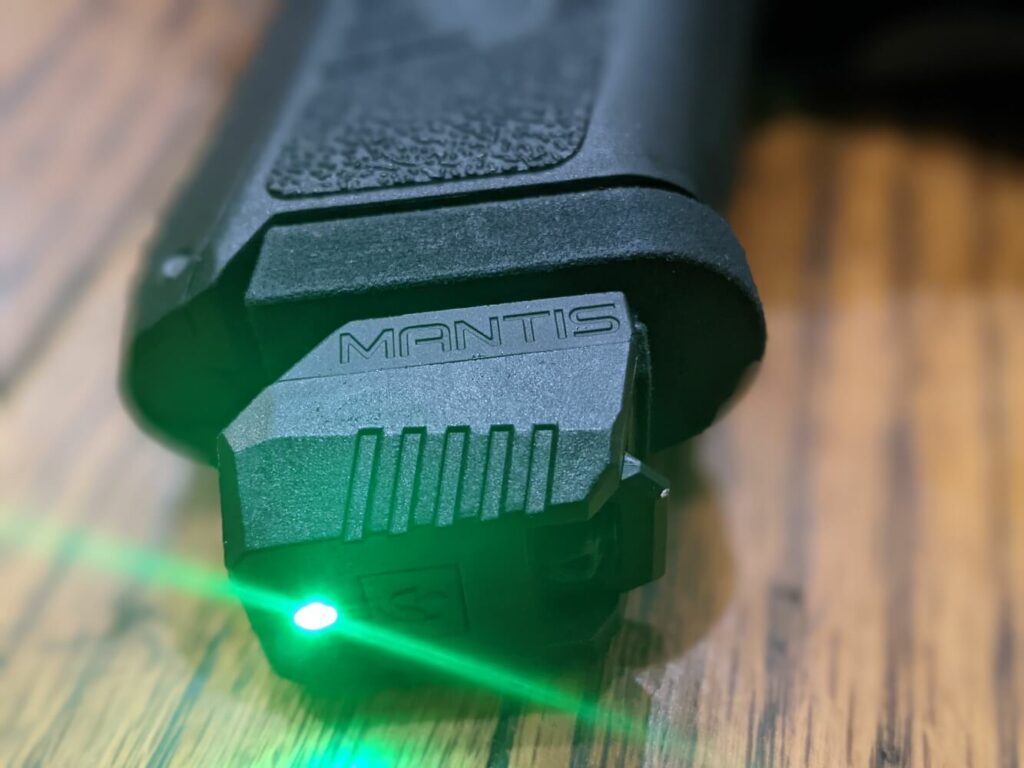
If you are interested in other items that can give you external feedback, I’ve found great success training with the MantisX. This sensor mounts to your firearm either on the rail or magazine, to give you feedback about your trigger pull, draw stroke, and speed. It also offers dry fire feedback around recoil management and time spent on the trigger. One important thing to keep in mind is that it’s not perfect, and the goal is to use the feedback to get better, not try to game the system to get good numbers or give yourself a false sense of security.
Another training aid many people find useful are laser feedback systems like SIRT pistols or laser training systems. These give you a laser dot to indicate your point of aim when you pull the trigger and some even score your shooting on a target. Again, these aren’t perfect, but the feedback can help some shooters diagnose issues they are having.
Start with the Basics and Work Your Way Up
The beautiful thing about dry fire is that it’s inexpensive and you can start today. You don’t need the other items listed here to start practicing your basics. Work on isolated items like your grip, or clearing your cover garment, or your presentation. As you start to become confident with basic drills, work your way up to more complex ones. T.Rex Arms has a great video on how to make the most of your dry fire sessions. Dry fire can be as simple or as complex as you want to make it, building out fundamentals or working on higher level skills.
It’s also a good idea to get training alongside your dry fire regime. Depending on where you are at as a shooter, training can help set you on the right path to make your dry fire more effective or give you some feedback of where you can improve as a shooter. Self critique is essential to dry fire, but sometimes it really does take another set of eyes to help you see where you can improve.
Any gear mentioned in this post was purchased for my personal use. I have not been compensated or incentivized by any company for any product reviews, highlights, or opinions.
Upcoming Live Fire Classes
Defensive Pistol Fundamentals – 1
Saturday, January 27th – 9am to 1pm
This class is a live fire training opportunity to work on defensive pistol skills. This first class will focus on fundamentals, including grip, site picture, and draw.
Intermediate Defensive Pistol – 2
Saturday, February 24th – 9am to 1pm
This intermediate defensive pistol class will focus on taking the next step in your firearms proficiency with items like target transitions, reactive targets, and reload drills.
Next Level Defensive Pistol – 3
Saturday, March 30th – 9am to 1pm
This next level defensive pistol class is an advanced class for practicing shooting and moving, transitions, and reactive targets.
Other Posts you Might Like
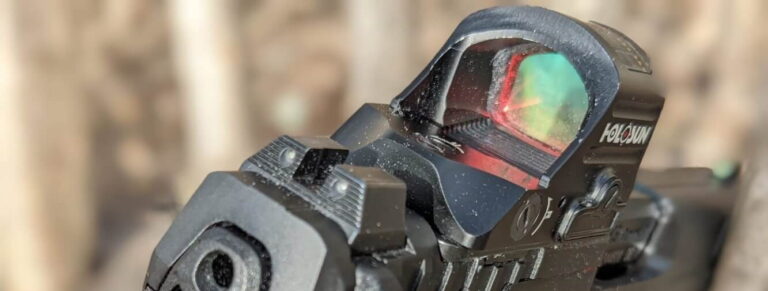
Holosun 407C X2 Review- 12K Rounds Later
*Updated February, 2024* I’ve been carrying the Holosun 407C X2 daily since 2021 and have over 12,000 rounds through it at the time of writing. Below is my experience with it over a few years and a few thousand rounds. Consider this a Holosun 407C X2 Review, just 12k+ rounds later. The vast majority of…
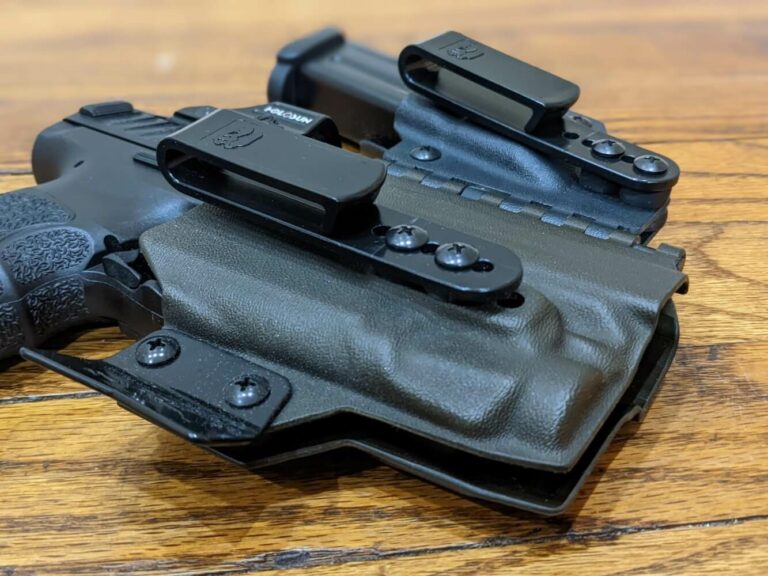
T.Rex Arms Sidecar Review
Updated 12.15.2023 with a reflection on two years of carrying. If you’ve been concealed carrying for any amount of time, you probably have a a collection of various holsters in different combinations for lights, guns, belts, sidecar setups, etc… When I saw T.Rex Arms had come up with a new Sidecar setup using a flexible…
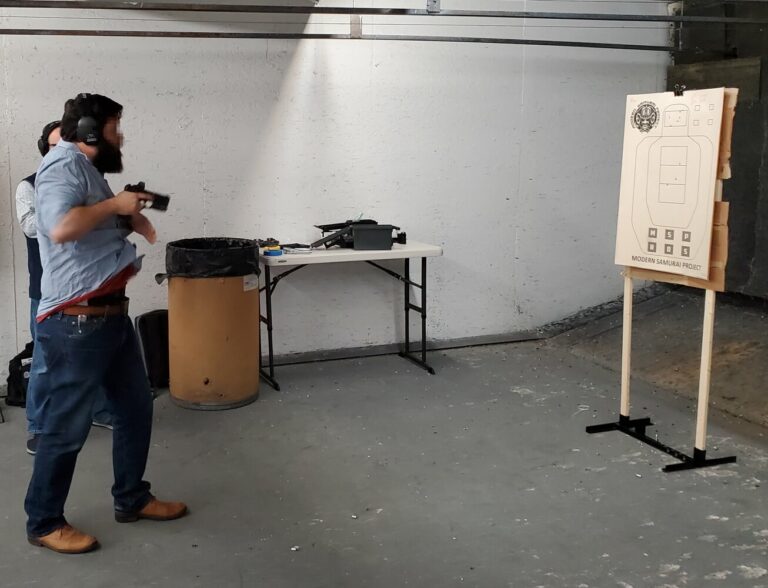
I’ve got my CCL – Now What? Next Steps for Concealed Carry
One of the most common questions I get is what to do once you have your concealed carry permit. Students who have taken a concealed carry class or friends who have just gotten their permit in the mail inevitably ask: Now what? What are my next steps for Concealed Carry? While different people may have…

NeoMag Alias: A Great Low Vis Option
Updated December, 2023 Back in October of 2021, I picked up a NeoMag Alias, a low visibility belt clip option for concealed carry. I’d previously switched to carrying appendix a few months prior and needed something to wear with a suit that didn’t obviously show the clips. Carrying strong side on a suit was easy,…
